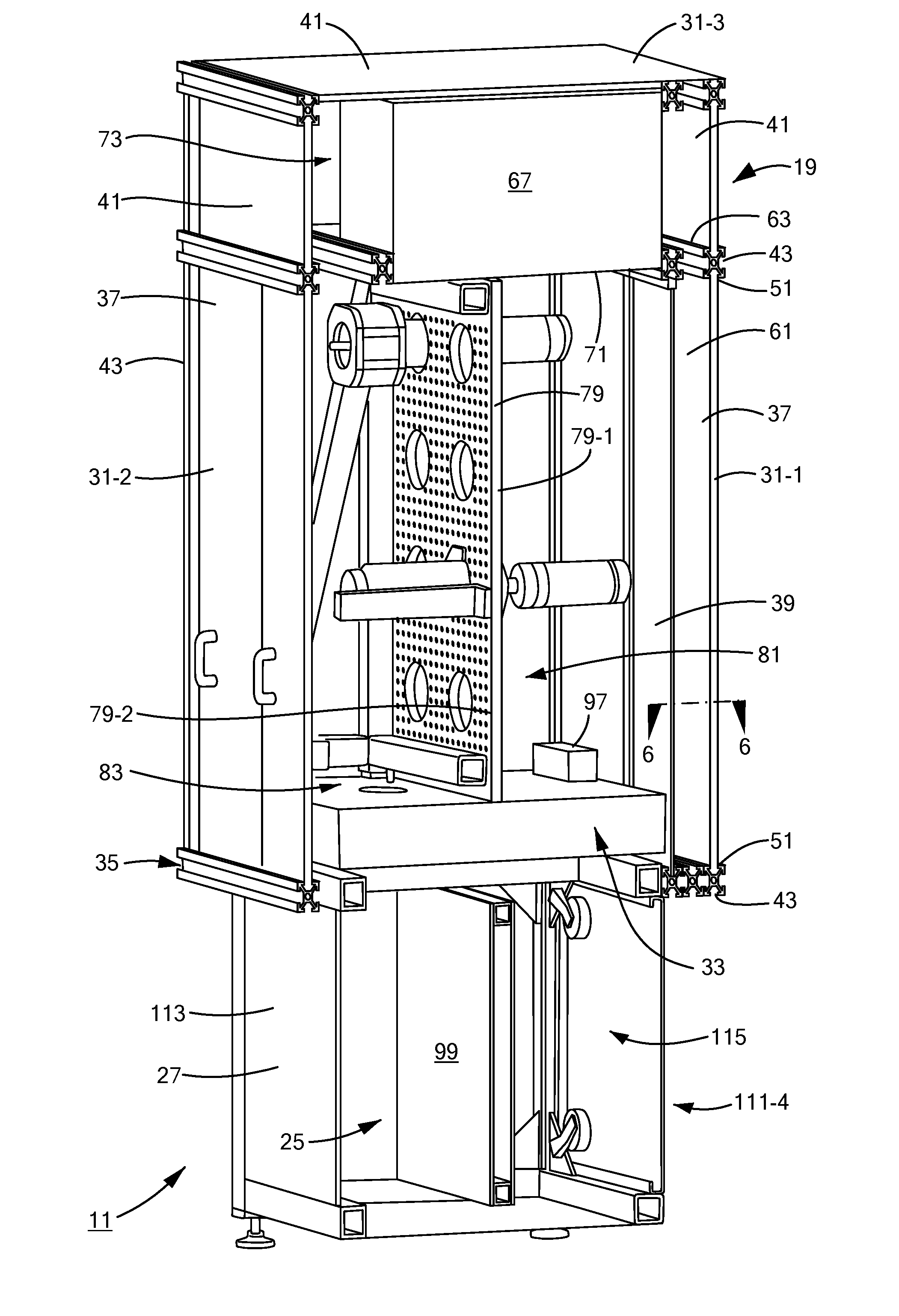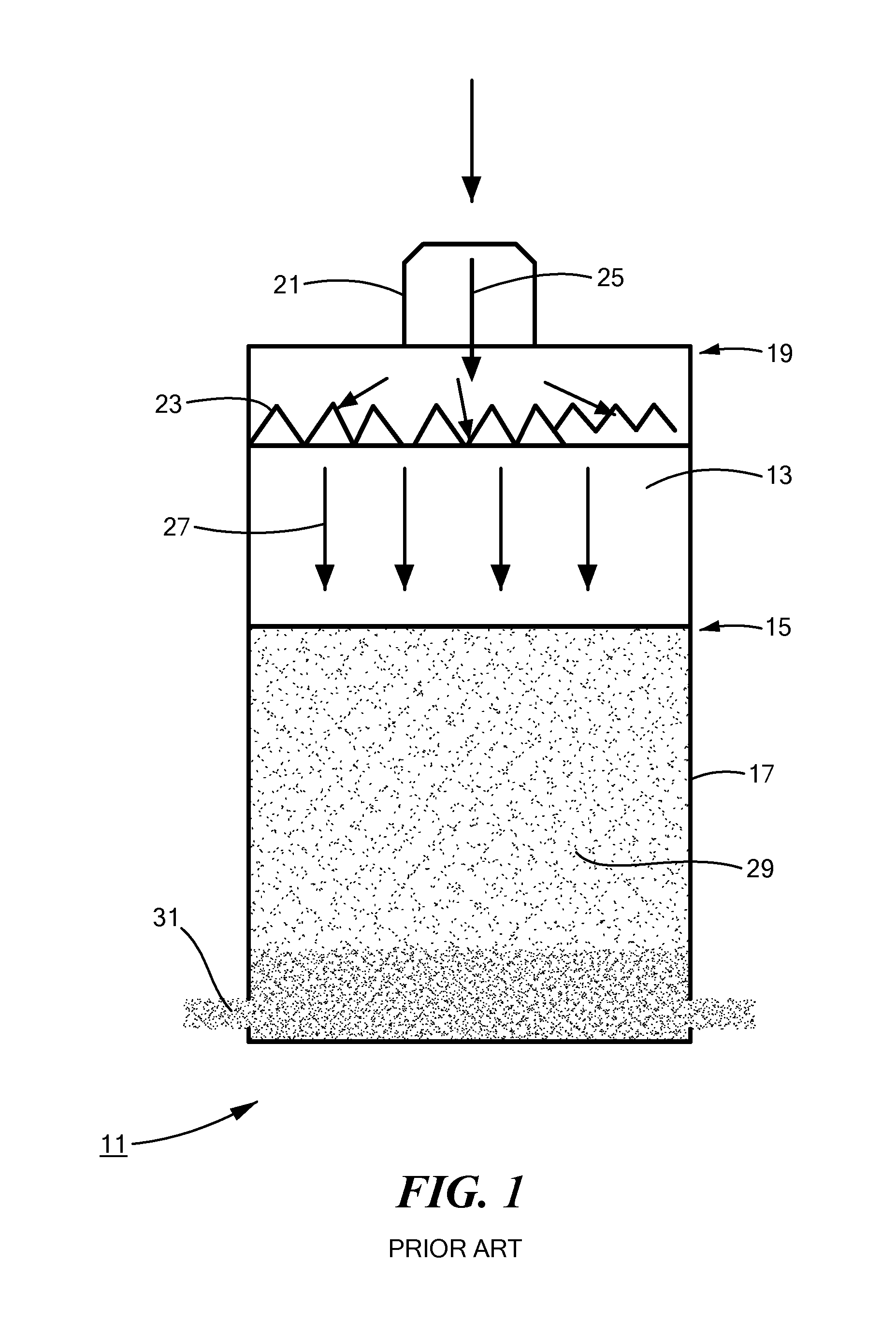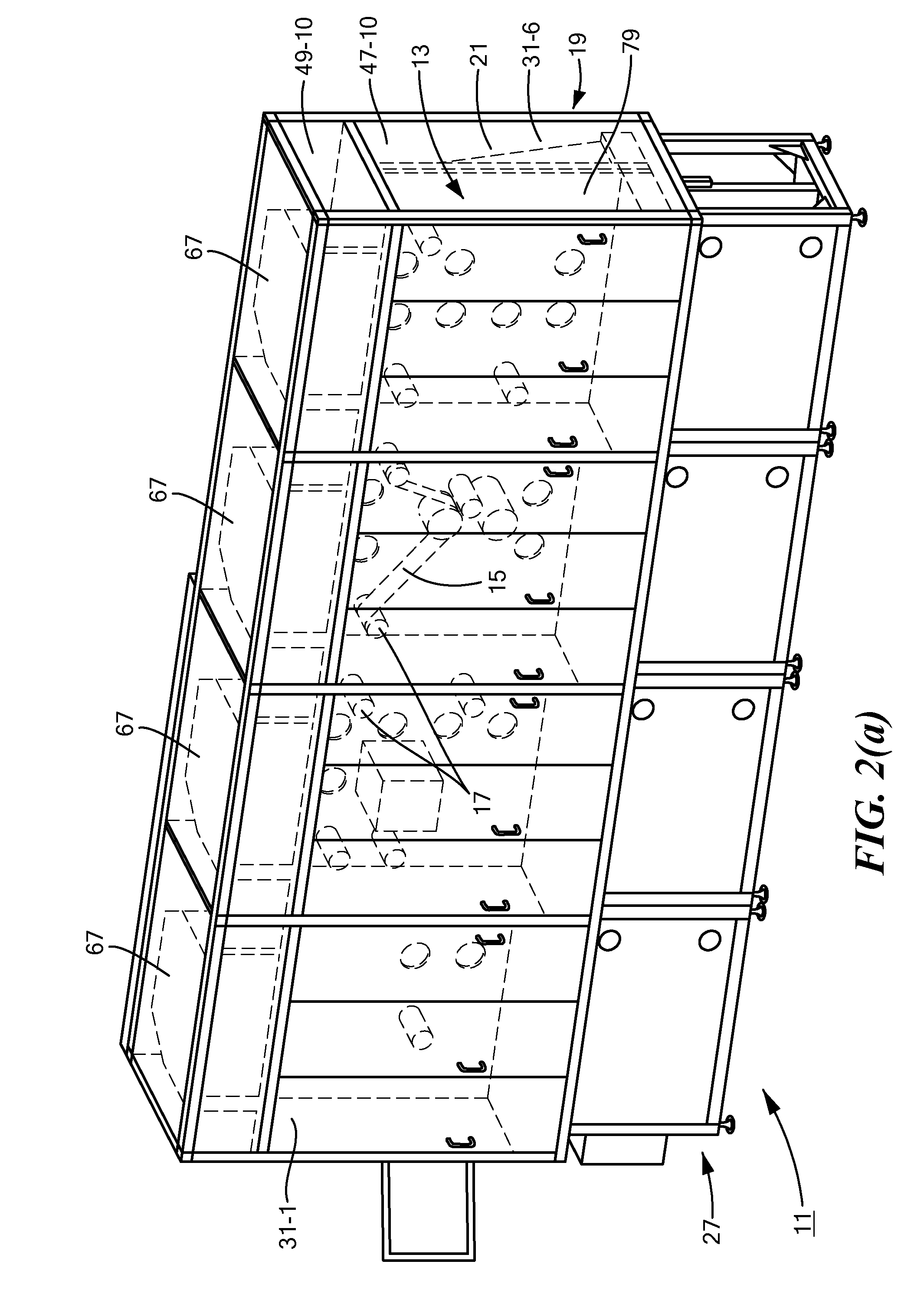System for maintaining a pollutant controlled workspace
- Summary
- Abstract
- Description
- Claims
- Application Information
AI Technical Summary
Benefits of technology
Problems solved by technology
Method used
Image
Examples
example 1
[0129]With fans 65, 69 and 77 operating, exterior panels 37 closed, and interior panels 39 removed, the average particle count recorded within selected areas of each module 29 for particles at least 0.5 μm in size was 125.9375. Table 1 below represents the data collected under the aforementioned test conditions.
TABLE 1ModuleModuleModuleModuleModeConditionSize29-129-229-329-4MAll Doors Closed0.5μ1039762196No Screens Bottom0.7μ30342756LeftMAll Doors Closed0.5μ6416313134No Screens Bottom0.7μ22311535RightMAll Doors Closed0.5μ10711057331No Screens Upper0.7μ503117102LeftMAll Doors Closed0.5μ7621148180No Screens Upper0.7μ2884045Right
example 2
[0130]With fans 65, 69 and 77 continuing to operate, exterior panels 37 opened, and interior panels 39 removed, the average particle count recorded within each module 29 for particles at least 0.5 μm in size increased to 978.3125. Table 2 below represents the data collected under the aforementioned test conditions.
TABLE 2ModuleModuleModuleModuleModeConditionSize29-129-229-329-4MAll Doors Closed0.5μ1039762196No Screens Bottom0.7μ30342756LeftMAll Doors Closed0.5μ6416313134No Screens Bottom0.7μ22311535RightMAll Doors Closed0.5μ10711057331No Screens Upper0.7μ503117102LeftMAll Doors Closed0.5μ7621148180No Screens Upper0.7μ2884045Right
[0131]As can be seen, the average particle count from example 1 to example 2 increased by a factor of 7.7, which is indicative of the effectiveness of airtight enclosure 19 in preventing outside contaminants from entering into workspace 81.
example 3
[0132]With both exterior and interior panels 37 and 39 installed and positioned closed, all fans 65, 69, and 77 were set to operate at 50% of their maximum speed. After waiting a suitable time period for clean air to circulate through workspace 81, the average particle count recorded within each module 29 for particles at least 0.5 μm in size was 79.5625. Table 3 below represents the data collected under the aforementioned test conditions.
TABLE 3ModuleModuleModuleModuleModeConditionSize29-129-229-329-4MAll Doors Closed0.5μ12778922All Screens Bottom0.7μ6441411LeftMAll Doors Closed0.5μ100697795All Screens Bottom0.7μ42274055RightMAll Doors Closed0.5μ103806546All Screens Upper0.7μ49353821LeftMAll Doors Closed0.5μ10584110103All Screens Upper0.7μ52465955Right
PUM
| Property | Measurement | Unit |
|---|---|---|
| Pressure | aaaaa | aaaaa |
| Flow rate | aaaaa | aaaaa |
| Efficiency | aaaaa | aaaaa |
Abstract
Description
Claims
Application Information
 Login to View More
Login to View More - R&D
- Intellectual Property
- Life Sciences
- Materials
- Tech Scout
- Unparalleled Data Quality
- Higher Quality Content
- 60% Fewer Hallucinations
Browse by: Latest US Patents, China's latest patents, Technical Efficacy Thesaurus, Application Domain, Technology Topic, Popular Technical Reports.
© 2025 PatSnap. All rights reserved.Legal|Privacy policy|Modern Slavery Act Transparency Statement|Sitemap|About US| Contact US: help@patsnap.com



